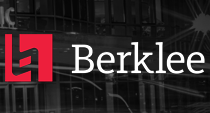Work Type
Article
Publication Date
Spring 2005
Department
Liberal Arts and Sciences
Keywords
letter; alphabet; alphabet books
Abstract
Sometimes letters seem to behave badly. They can be eaten, in alphabet soup and Alphabits™ cereal; they can build structures unrelated to letters, with wooden alphabet blocks; they can be a physical impediment or challenge, as with the alphabet superhero "Letterman" on The Electric Company who, in Superman-style, used to leap a capital T and run "faster than a rolling O"; they can even become abstract art, as in the urban institution of "tagging," or signing a name in outlandish, highly stylized and often-unrecognizable graffiti letters. While these functions of letters may seem counter to what might be taught in school, we should ask if the letters are really misbehaving. Perhaps they are just getting back to their roots. In fact, I hope to argue here that they are actually fulfilling a function of the alphabet that hearkens back to a more fundamental and older role—of letters stepping outside of their abstract function of phonetic representation to become material objects. They are also things to be eaten, to be played with, to obstruct us, to build with, to exist independently as art and as physical testimony of our existence—objects that not only act (or are acted upon), but also cause a material effect. Karen Coats, in her essay, "P is for Patriarchy: Re-Imaging the Alphabet," would call this use of language "performative" and distinguish it from a "constative" role, or one that is more abstract. The distinction is a useful one, not only, as Coats does, in showing the trends of the alphabet book and the re-emergence of the more radical role of language in constructing reality, but also in showing how written language has always combined these roles.
Recommended Citation
Heyman, Michael, "The Performative Letter, from Medieval to Modern" (2005). Faculty Works.
https://remix.berklee.edu/faculty-works/43


Comments
This is the accepted version of an article that appears in Volume 30, Number 1 (pp. 100-107) of Children’s Literature Association Quarterly; published by Johns Hopkins University Press in 2005. The final version can be found at https://doi.org/10.1353/chq.2005.0010.